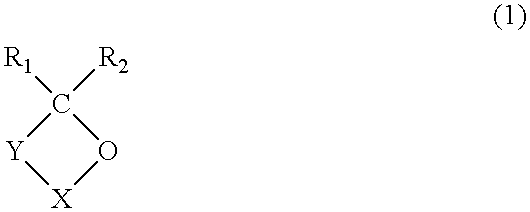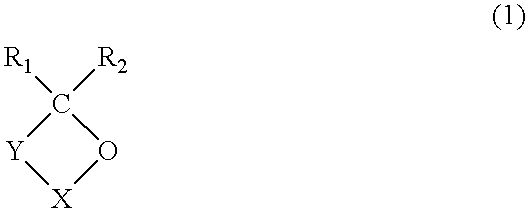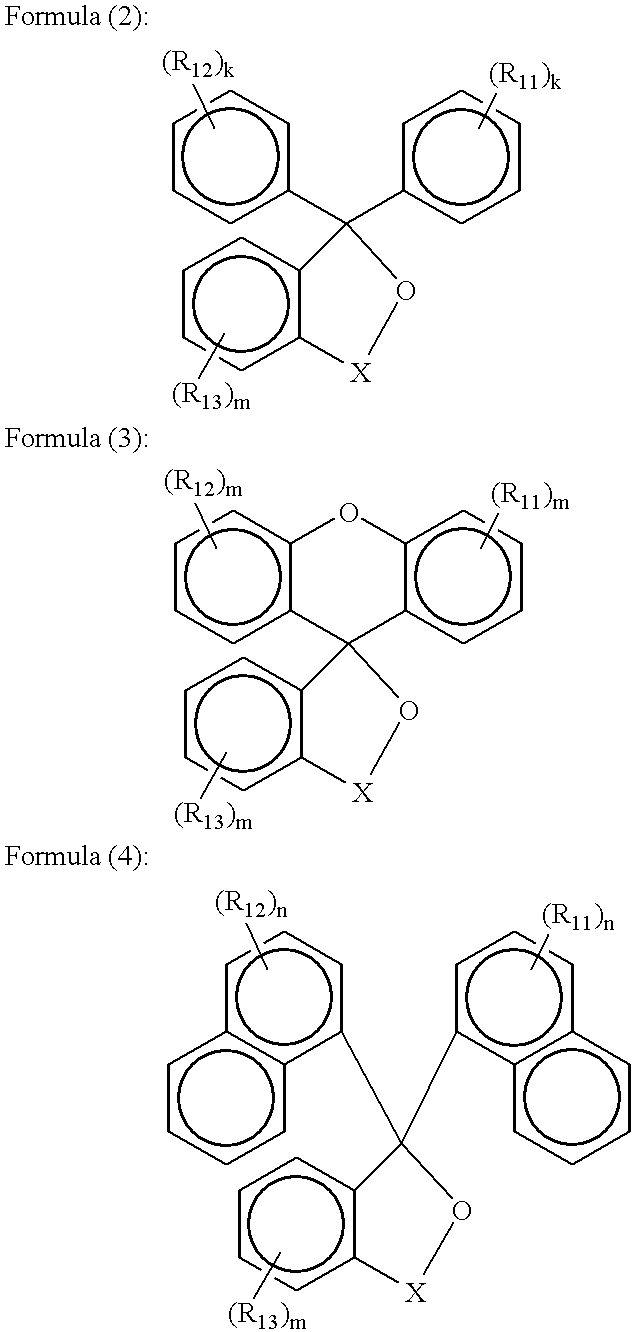Photosensitive composition containing a dissolution inhibitor and an acid releasing compound
a dissolution inhibitor and acid release technology, applied in the field of photosensitive compositions, can solve the problems of affecting the dimensional precision not being able to have a great height-to-width ratio of any part of the resultant resist pattern, etc., to achieve good cross-sectional shape and great resistance to dry etching
- Summary
- Abstract
- Description
- Claims
- Application Information
AI Technical Summary
Benefits of technology
Problems solved by technology
Method used
Image
Examples
example 57
Specifically, 2.0 g of cresolphthalein di-t-butyl carbonate and 0.02 g of triphenylsulfonium tri-furate were dissolved in 5 g of ethylcellosolveacetate, followed by filtering the resultant solution with a filter having pore size of 0.2 .mu.m so as to obtain a photosensitive composition.
A silicon wafer was coated with the photosensitive composition using a spinner. The coating was dried at 900.degree. C. for 5 minutes so as to obtain a film having thickness of 1.0 .mu.m. The sensitivity of the photosensitive composition film to an ultraviolet ray having a wavelength of 251 nm was found to be 5 mJ / cm.sup.2.
As has been described, the present invention can provide a composition which has high photosensitivity, excellent resolution performance, and high heat resistance, and serves to etching a substrate, thereby to transfer a pattern faithfully onto the substrate, and can effectively be used in the photoetching step of the method for manufacturing semiconductor devices having high integr...
PUM
| Property | Measurement | Unit |
|---|---|---|
| softening point | aaaaa | aaaaa |
| pore size | aaaaa | aaaaa |
| thickness | aaaaa | aaaaa |
Abstract
Description
Claims
Application Information
 Login to View More
Login to View More - R&D
- Intellectual Property
- Life Sciences
- Materials
- Tech Scout
- Unparalleled Data Quality
- Higher Quality Content
- 60% Fewer Hallucinations
Browse by: Latest US Patents, China's latest patents, Technical Efficacy Thesaurus, Application Domain, Technology Topic, Popular Technical Reports.
© 2025 PatSnap. All rights reserved.Legal|Privacy policy|Modern Slavery Act Transparency Statement|Sitemap|About US| Contact US: help@patsnap.com



